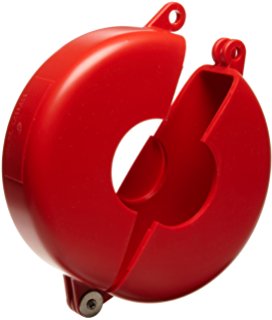UPFRONT DISCLAIMER: I am not suggesting you throw out any of your LOTO devices or change your practices. This is NOT advice, merely an attempt to demonstrate how some companies go above and beyond OSHA minimums.
In my days working in the chemical industries, I had the pleasure of working with some of the finest plant managers, engineers, and safety professionals. And in those years, I learned safety – NOT as OSHA defined it – but how the company defined it. I worked in plants and at companies that had suffered tragic losses long before the publication of OSHA’s PSM and EPA’s RMP standards. Two of these companies, mainly driven by the two plant managers I worked for, strictly prohibited using what most of us would call a “clamshell” lockout device (as shown below).

Yeah, I know, another crazy Haywood safety rule! But this was not my rule; this was an actual company prohibition, and if we look at OSHA’s definition of a “Lockout device,” we can see how some engineers would conclude that there are questions about using this type of device. Here is OSHA’s definition of a Lockout Device:
